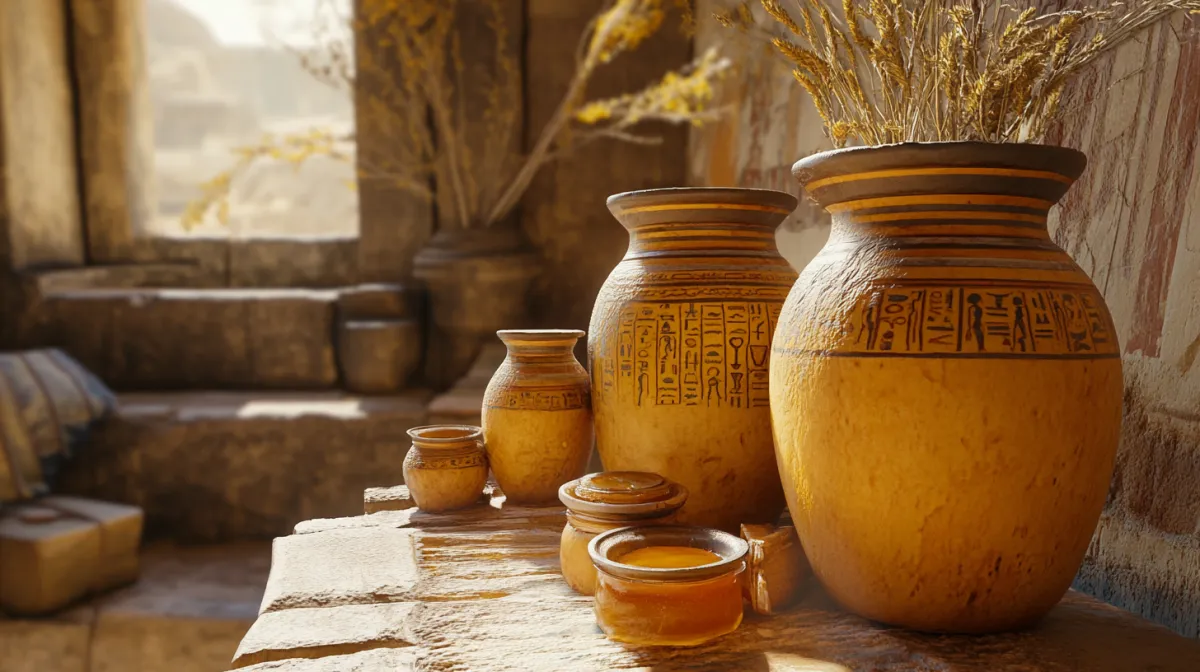
Honey's History: From Ancient Egypt to Contemporary Supermarkets
Overview
Honey, one of the oldest and most treasured natural substances, has long been revered for its sweetness, therapeutic properties, and symbolic significance. Across the ages, honey has played a crucial role in diets, medicine, and religious practices. Its journey, from the wild hives of ancient civilizations to the neatly packaged jars in today’s supermarkets, highlights its enduring appeal and versatility. Let’s delve into the rich history of honey, exploring its roots across various cultures and time periods.

Photo Credited to Local Hive
Honey's Ancient History
The First Records of Honey Use
The history of honey stretches back thousands of years. Some of the earliest evidence of its use comes from prehistoric cave paintings in Spain, which depict humans harvesting honey from wild hives—a practice believed to have taken place around 8,000 B.C. These ancient illustrations emphasize the significant role honey played not only as a food source but also as a valuable commodity in early human societies.
Honey in Ancient Egypt

In Ancient Egypt, honey was esteemed as a divine substance. Often referred to as "the food of the gods," honey was a crucial element in religious ceremonies, where it was offered to deities as a symbol of wealth and prosperity. Honey also held a prominent place in the Egyptian diet, used to sweeten various foods and drinks. Its medicinal applications were extensive, with honey being applied to wounds to prevent infection and included in remedies for digestive issues. The discovery of honey in the tombs of pharaohs underscores its importance in Egyptian culture, where it was believed to provide sustenance in the afterlife.
Honey in Ancient Greece and Rome
The Greeks and Romans also placed a high value on honey. In Greek mythology, honey was considered a gift from the gods, and it played a significant role in both diet and medicine. Hippocrates, often regarded as the father of medicine, frequently prescribed honey for its therapeutic properties, using it to treat conditions such as fever, sore throats, and wounds. The Romans, too, held honey in high regard, incorporating it into their cooking, preserving fruits, and crafting mead, a popular alcoholic beverage made from fermented honey.
Honey in the Middle Ages
Honey as Europe’s Primary Sweetener
During the Middle Ages, honey was the primary sweetener throughout Europe, well before sugar became widely available. Honey was a key ingredient in a variety of dishes, from pastries to beverages, and its natural preservative qualities made it essential for food storage. It also played a central role in the production of mead, a drink that remained popular throughout the medieval period.
Medicinal and Symbolic Uses of Honey in Medieval Europe
Honey’s importance extended far beyond the kitchen during the Middle Ages. It was widely used in folk medicine to treat ailments such as coughs, wounds, and digestive problems. Honey was also a symbol of purity and abundance, often featured in religious rituals and symbolic ceremonies. In many cultures, honey was seen as a sacred substance, associated with fertility, prosperity, and divine favor.
Honey in Indigenous Cultures
The Role of Honey in Indigenous Traditions
Indigenous cultures across the globe have long recognized the value of honey, not just as a food source, but also in traditional medicine and spiritual rituals. In Africa, honey was used in ceremonies and offered to ancestors as a sacred substance. Similarly, in Asia and the Americas, honey was integral to the diets and healing practices of indigenous peoples. Traditional methods of honey harvesting, such as those practiced by the Mayans in Central America, have been passed down through generations and continue to be used today, preserving the cultural significance of honey.
The Evolution of Beekeeping
Early Beekeeping Practices
Beekeeping has its roots in ancient civilizations, with early methods documented in Egypt, Greece, and China. The Egyptians were among the first to practice organized beekeeping, using clay or wooden hives to cultivate bees and collect honey. The Greeks and Romans advanced these techniques, recognizing the essential role of bees in agriculture and food production.
The Development of Modern Beekeeping
The evolution of beekeeping took a significant step forward during the 18th and 19th centuries in Europe. The invention of the movable-frame hive by Lorenzo Langstroth in 1851 revolutionized beekeeping, allowing beekeepers to manage hives more efficiently and harvest honey without destroying the colony. This innovation laid the groundwork for the commercial production of honey and the expansion of beekeeping as an agricultural practice.
Honey in Modern Times
Commercialization and Industrialization
The 20th century brought the commercialization and industrialization of honey production, with technological advances and improved transportation making honey more accessible globally. However, this shift also led to the mass production of processed honey, which often stripped the honey of its natural enzymes and nutrients. In response, there has been a growing consumer demand for raw, organic, and artisanal honey, prized for its purity and health benefits.
Honey in Contemporary Medicine and Wellness
Today, honey remains valued not only as a sweetener but also for its medicinal properties. It is widely used in natural and alternative medicine for its antimicrobial and anti-inflammatory effects. Honey is also a popular ingredient in skincare products and is frequently used in home remedies for common ailments like coughs, sore throats, and skin conditions.
Honey’s Continued Cultural Significance
Honey in Religious and Cultural Traditions
Honey continues to hold cultural and religious significance around the world. In Judaism, honey is central to the celebration of Rosh Hashanah, symbolizing the hope for a sweet new year. In Hinduism, honey is used in rituals and offerings, representing purity and nourishment. In many cultures, honey is also a traditional gift at weddings and other significant events, symbolizing prosperity and happiness.
The Future of Honey
Impact of Climate Change and Pesticides
The future of honey production faces several challenges, particularly the impact of climate change and the use of pesticides, which have contributed to the decline in bee populations worldwide. Sustainable beekeeping practices are more important than ever to ensure the survival of bees and the continued availability of honey.

Innovations in Honey Production
Innovations in honey production are increasingly focused on sustainability, with an emphasis on supporting healthy bee populations and minimizing environmental impact. The future may see further developments in organic and urban beekeeping, along with increased consumer awareness of the importance of choosing ethically produced honey.
Conclusion
From its sacred origins in ancient civilizations to its place in modern kitchens and wellness practices, honey’s history is a rich tapestry woven through cultures and time. Despite the challenges it faces, honey remains a cherished and versatile product, celebrated for its sweetness, health benefits, and cultural significance. As we look to the future, the enduring appeal of honey serves as a reminder of the deep connection between nature and human well-being.
